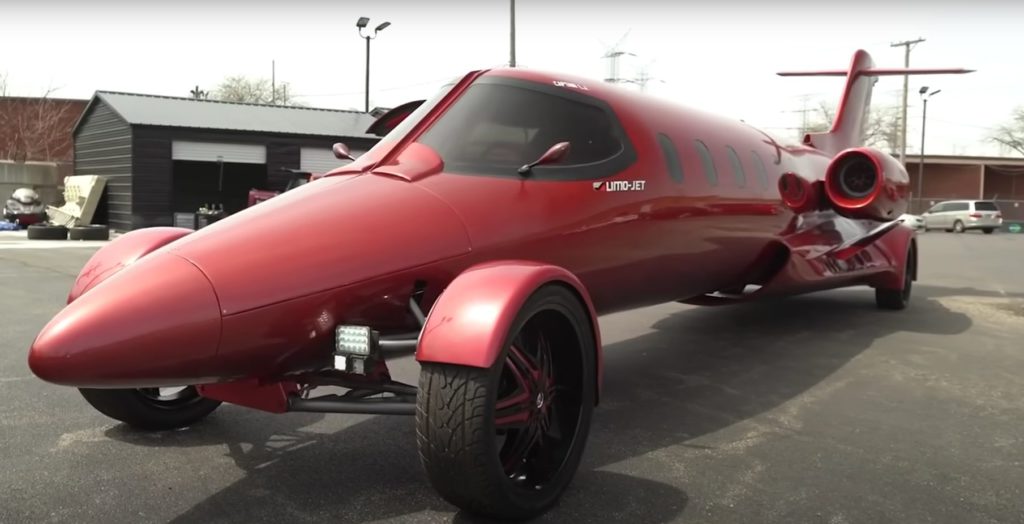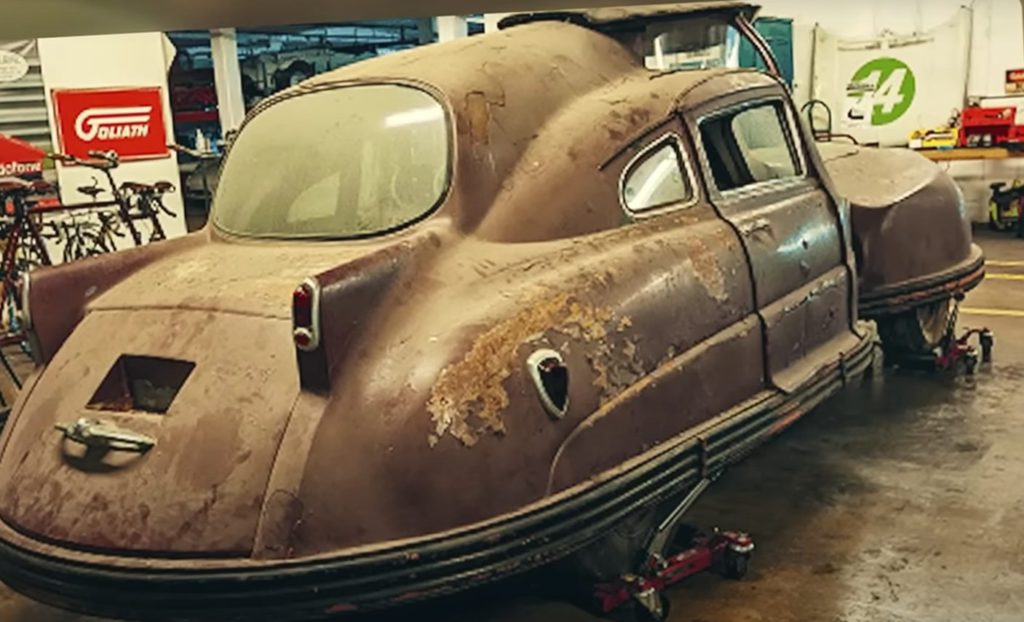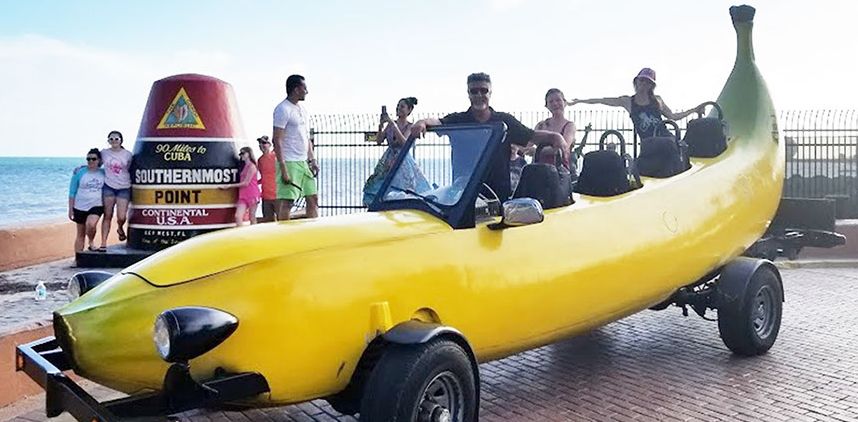Car design typically follows predictable patterns—sleek curves, functional dashboards, and sensible proportions. But some visionaries threw those rules out the window and created automotive masterpieces that challenged every assumption about what vehicles should look like inside and out.
For readers interested in innovative car inventions that push comfort and control to the next level, there are plenty of modern examples that show just how far creativity can go. From three-story motor homes with meditation rooms to cars shaped like bananas, these designs prove that creativity knows no boundaries. You’re about to explore the wildest interiors and most outrageous exteriors that dared to ask: what if cars could be pure artistic expression instead of boring transportation pods?
19. Sebring Vanguard City Car
During the 1970s energy crisis, the SV48’s hatchback coupe design represented early electric vehicle aesthetics with clean, efficient lines. The first electric cars history shows that innovators have been experimenting with battery-powered vehicles since the 1800s, long before today’s EV boom. The compact exterior prioritized aerodynamics and practicality over flashy styling. This modest appearance belied its pioneering role in electric transportation development—like the automotive equivalent of that one friend who was into sustainable living before it was trendy.
The two-seater interior focused on simplicity and efficiency rather than luxury appointments, preserved by electric vehicle historians. Basic controls managed the 6.5-horsepower electric motor while providing essential comfort features. This spartan cabin reflected early electric vehicle priorities of function over form—giving “we have Tesla at home” energy, except this actually came first and deserves respect.
18. Limo Jet Exterior

This 42-foot rolling nightclub transformed a Learjet fuselage into street-legal transportation during the peak of custom car culture excess. Massive 28-inch diabolo wheels support the aircraft body while maintaining the sleek jet aesthetic. The exterior screams luxury and absurdity in equal measure—like if a private jet and a nightclub had a baby that somehow got DMV approval.
Limo Jet Interior

The interior houses a 17,000-watt sound system, infinity mirror flooring, and seating for 18 passengers, verified by custom car specialists. Nightclub-quality lighting and premium materials create an airborne party atmosphere at ground level. This flying machine’s cabin delivers first-class luxury without ever leaving the pavement—giving “we have private jets at home” energy, except this one actually slaps.
17. Nautilus Car

Ken Freeman’s 22-foot recreation features six wheels supporting a meticulously crafted fiberglass body during the steampunk revival movement. Hindu-inspired engravings cover the exterior with authentic detail surpassing the original film design. The world of replica movie cars is filled with dedicated builders who bring cinematic icons to life, blending artistry and engineering. This mobile art piece demonstrates movie replica perfection through passionate craftsmanship—like cosplay but for cars and with significantly more horsepower.
The Nautilus interior replicates the submarine’s ornate Victorian styling with period-appropriate controls and furnishings, verified by film prop specialists. Brass fittings and intricate detailing create an immersive experience that transports occupants into Jules Verne’s imagination. Every surface reflects Freeman’s dedication to authentic reproduction—giving “period drama but make it drivable” energy that would make Netflix jealous.
16. 1958 Serval

During the 1950s automotive safety awakening, Walter C. Jerome’s safety-focused design featured thick metal construction and a prominent roll cage protecting occupants. Recent innovations in automotive safety continue to build on these early breakthroughs, making today’s vehicles far safer than their predecessors. The bulky exterior reflected safety priorities over aesthetic considerations when cars were basically death traps. This prototype’s appearance prioritized protection during automotive history’s most dangerous period—like if a tank and a family car had a responsible, safety-conscious baby.
The interior featured built-in seatbelts and reinforced passenger protection systems ahead of industry standards, documented by automotive safety historians. Safety equipment dominated the cabin design while providing basic comfort amenities. This forward-thinking interior helped promote safer vehicle concepts during the era when seat belts were considered optional—giving “helicopter parent but for car design” energy that actually saved lives.
15. Pink Panther Mobile

During the 1970s TV tie-in merchandise boom, Jay Orberg’s 23-foot pink phenomenon defined automotive whimsy through its cartoon-inspired design. The bright pink exterior perfectly matched the television show’s aesthetic while maintaining functional proportions. This rolling advertisement proved that cars could successfully translate animated characters into physical reality—like bringing a meme to life but with actual engineering involved.
The “pleasure capsule” interior featured pink satin seats, matching shag carpeting, and a fully stocked bar, documented by entertainment industry historians. Even the television and telephone embraced the monochromatic pink theme throughout the cabin. This coordinated color scheme created an immersive experience worthy of the cartoon character—basically the automotive equivalent of those Barbie Dream Houses everyone secretly still wants.
14. Honda Fuya-Jo

During Japan’s economic bubble era, Honda’s “Sleepless City” concept captured the nation’s vibrant nightlife through radical automotive design. The exterior’s angular lines and bold proportions suggested movement even while stationary. This nightclub-on-wheels challenged traditional automotive aesthetics with its aggressive, youth-oriented styling—like if a Game Boy and a sports car had a cyberpunk baby.
The interior featured a DJ booth control panel and vinyl turntable steering wheel that captured club culture perfectly, displayed at automotive design museums. Every surface embraced the nightlife theme through lighting and materials designed for entertainment. This rolling disco demonstrated Honda’s willingness to explore radical interior concepts—giving “we turned a car into a vibe” energy that would absolutely dominate social media today.
13. Colim Caravan Exterior

During the modern modular design movement, Christian Susanna’s innovative design features detachable sections and expandable walls that transform based on user needs. The exterior maintains drivable proportions while hiding incredible interior flexibility. This approach solves complex camping challenges through modular engineering in vehicles.
Colim Caravan Interior

Multi-functional modules customize the interior space for 2-4 people through movable walls and convertible furniture, featured in modern design exhibitions. The flexible layout adapts to different camping scenarios while maintaining comfort and functionality. This modular system anticipates traveler needs through intelligent space management—giving “we solved camping” energy that would make tiny house influencers weep with envy, and it’s no surprise that must-see car gadgets are making interiors even smarter and more adaptable.
12. Shoe Car

During the 1980s art car movement, someone looked at a formal dress shoe and thought it needed an engine. The sleek, polished exterior perfectly mimicked high-end footwear while housing all necessary automotive mechanics. This rolling fashion statement proved that cars can literally be wearable art, challenging every assumption about automotive design priorities.
The shoe car’s interior maintained the footwear theme while providing functional seating and controls that actually worked. Designers cleverly integrated dashboard elements that complemented the exterior’s formal shoe aesthetic—like a luxury sneaker collab but for cars. Every surface reinforced the concept that transportation could double as haute couture, creating a cohesive fashion-forward experience.
11. Amphicar Model 770

During the 1960s space age optimism, the Amphicar’s exterior balanced boat and car design requirements through major engineering compromises. Waterproof seals surrounded doors while propellers mounted at the rear for aquatic propulsion. The streamlined profile worked adequately on both land and water, though excelling at neither—like trying to be the main character in two different movies simultaneously. This unique approach is part of the broader story of amphibious vehicle development.
Inside, nautical-themed controls managed both road and water operations from a single dashboard, as documented by the Petersen Automotive Museum. Waterproof materials protected against inevitable leaks while providing standard automotive comfort. The interior successfully bridged the gap between yacht and automobile, creating a unique amphibious driving experience that screamed “I’m not like other cars, I’m a cool car.”
10. Zombie Fighting Maybach Xcelero

During the post-apocalyptic media craze, the apocalypse-ready exterior features tank-like rear tracks, armored plating, and comprehensive weaponry including hood-mounted guns. A reinforced bullbar ensures zombie-clearing capabilities while maintaining the Maybach’s luxury aesthetic. This transformation proves any vehicle can become post-apocalyptic with enough imagination—like if Mad Max had a trust fund and better taste in base vehicles.
The armored passenger cabin provides survival-focused amenities while maintaining luxury appointments, documented by custom armor specialists. Protected seating areas offer comfort during zombie encounters, while weapon controls integrate seamlessly into the dashboard. This fortified interior balances lethality with Maybach’s traditional opulence—giving “bougie survivalist” energy that would absolutely break the internet if zombies were actually real.
9. Banana Car Exterior

Built during America’s obsession with roadside attractions, this yellow phenomenon demanded highway attention like a viral TikTok video. Creators sculpted polyurethane foam over reinforced steel, achieving botanical accuracy that fooled grocery shoppers from a distance. Bright yellow paint and strategic brown spots completed the illusion of a rolling, 23-foot banana that belongs in a Wes Anderson fever dream.
Inside the fruit-shaped madness, standard pickup truck controls operated this edible-looking machine documented by the Smithsonian Institution. The interior maintained functionality despite the exterior’s absurdity, proving that even the most ridiculous automotive concepts require practical driver interfaces. Passengers experienced transportation from inside a giant piece of produce—basically the automotive equivalent of those inflatable costumes everyone wore in 2020.
8. Shed on Wheels Exterior

Kevin Nicks’ creation looks exactly like a garden shed someone forgot to remove from a trailer during Britain’s eccentric engineering revival. The 13,000-pound exterior maintains authentic shed proportions while hiding 400 horsepower beneath. This deceptive design makes speed records seem impossible until reality proves otherwise—giving ultimate sleeper car vibes.
The shed’s interior houses serious racing equipment disguised as garden storage space, documented by Guinness World Records officials. Professional racing seats and safety equipment occupy the space where lawn mowers should live. This contradiction between exterior appearance and interior performance creates automotive cognitive dissonance at 101 mph—like finding out your quiet neighbor is actually a secret agent.
7. Messerschmitt KR200 Exterior

During post-war Europe’s material shortages, this tandem-seat microcar adopted airplane cockpit design from its aircraft manufacturer heritage. The streamlined exterior maximized aerodynamics while minimizing material usage, weighing just 250 kg. The bubble canopy and sleek profile made it look more like a land-based fighter jet than traditional car—basically the automotive equivalent of converting swords to plowshares.
Messerschmitt KR200 Interior

The aircraft-inspired interior featured tandem seating that mimicked fighter plane cockpits, preserved in automotive museums worldwide. Controls were strategically positioned for the pilot-like driver experience, while the passenger rode behind like a wingman. This aviation-influenced layout made every drive feel like a low-altitude flight mission—giving Top Gun energy decades before Tom Cruise made it cool again.
6. Cadillac Eldorado Limo Exterior

During the 1980s excess era, Jay Ohrberg’s 100-foot creation required 26 wheels to support its massive frame. The exterior stretches beyond reasonable proportions while maintaining Cadillac’s luxury aesthetic throughout its gargantuan length. This automotive centipede represents automotive luxury excess taken to its logical extreme—like someone asked “what if a limo, but more” and nobody stopped them.
Cadillac Eldorado Limo Interior

The interior features a swimming pool, hot tub, king-sized waterbed, and helipad among countless luxury amenities, documented by Ripley’s Believe It or Not. Multiple sections provide different entertainment zones throughout the massive cabin. This rolling hotel demonstrates what happens when money meets unlimited imagination—basically the automotive equivalent of those McMansions that went viral for having too many chandeliers.
5. Jellybean Skate Car

During the 1970s custom car culture explosion, Larry Strickland’s colorful creation combined elements from 16 different vehicles into one cohesive design. The vibrant exterior perfectly captured decade style through bold colors and unconventional proportions. This rolling art piece became a beloved fixture near Atlanta’s Sparkle Skating Rink—like if a disco ball and a Hot Wheels collection had a groovy, street-legal baby.
The interior accommodated the 1,600cc Volkswagen engine while providing functional seating and controls, documented by custom car enthusiasts. Creative use of space maximized utility within the unique exterior constraints. This practical cabin proved that artistic vehicles could maintain everyday functionality—giving “we’re here for a good time and a long time” energy that perfectly captured the 70s spirit.
4. Fiat 600 Multipla Exterior

During 1950s European recovery, Fiat achieved the impossible by creating a six-seat vehicle within compact car dimensions. The innovative exterior design maximized interior space through clever proportioning and efficient packaging. This space-saving masterpiece influenced generations of people-mover design innovation—like Marie Kondo but for car design, making every inch spark joy and functionality.
Fiat 600 Multipla Interior

The interior accommodated six passengers within a remarkably small footprint through ingenious seating arrangements, studied by automotive design schools worldwide. Multiple configurations allowed flexibility while maintaining comfort for all occupants. This efficient layout proved that creative engineering could overcome seemingly impossible space constraints—giving “clown car but make it elegant” energy that would impress even modern Tesla designers.
3. Homemade Motor Home

Jeremy Clarkson’s three-story Citroen monstrosity defied every law of physics during the peak era of outrageous TV stunts. This towering mobile home stretched skyward like something from a Tim Burton movie, with each level precariously balanced. The exterior resembled a Jenga tower someone accidentally put wheels on.
Inside this vertical madness, Clarkson crammed a small kitchen, Japanese meditation room, and two hammocks on the dizzying top floor—giving main character energy in the worst possible way. Navigation between levels required climbing a precarious ladder that would make OSHA inspectors cry. Each room served a specific purpose documented by automotive historians.
2. 1929 Rocket Car

During the roaring twenties’ speed obsession, Max Valier’s creation combined a familiar 1921 Chevrolet chassis with avant-garde rocket propulsion. The cardboard and linoleum body kept weight minimal while two gasoline-fueled rockets provided unprecedented power. This experimental exterior embodied pure 1920s technological optimism—like steampunk but with actual fire and zero safety regulations.
The interior maintained basic automotive controls while adding rocket engine management systems, preserved in automotive history archives. Minimal instrumentation reflected the experimental nature of this speed machine, prioritizing essential functions over comfort. The sparse cabin focused entirely on controlling dangerous rocket-powered acceleration—giving “yolo but make it scientific” energy that would absolutely not fly today.
1. Simca Fulgur

During the 1950s atomic age optimism, Robert Opron’s atomic-powered concept balanced on two wheels while projecting space-age advancement. The sleek exterior suggested advanced technology through its streamlined profile and radical proportions. This self-balancing design captured era faith in nuclear-powered civilian transportation—like if The Jetsons was a documentary and someone actually tried to build the future.
The interior featured radar guidance systems, voice activation, and atomic power controls representing ultimate technological advancement, preserved in automotive design archives. Futuristic instrumentation promised automated driving decades before modern systems. This forward-thinking cabin embodied humanity’s atomic age dreams—giving “we cracked the code of tomorrow” energy that makes today’s smart cars look almost quaint by comparison.






0 Comments